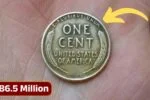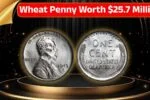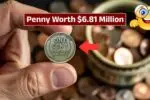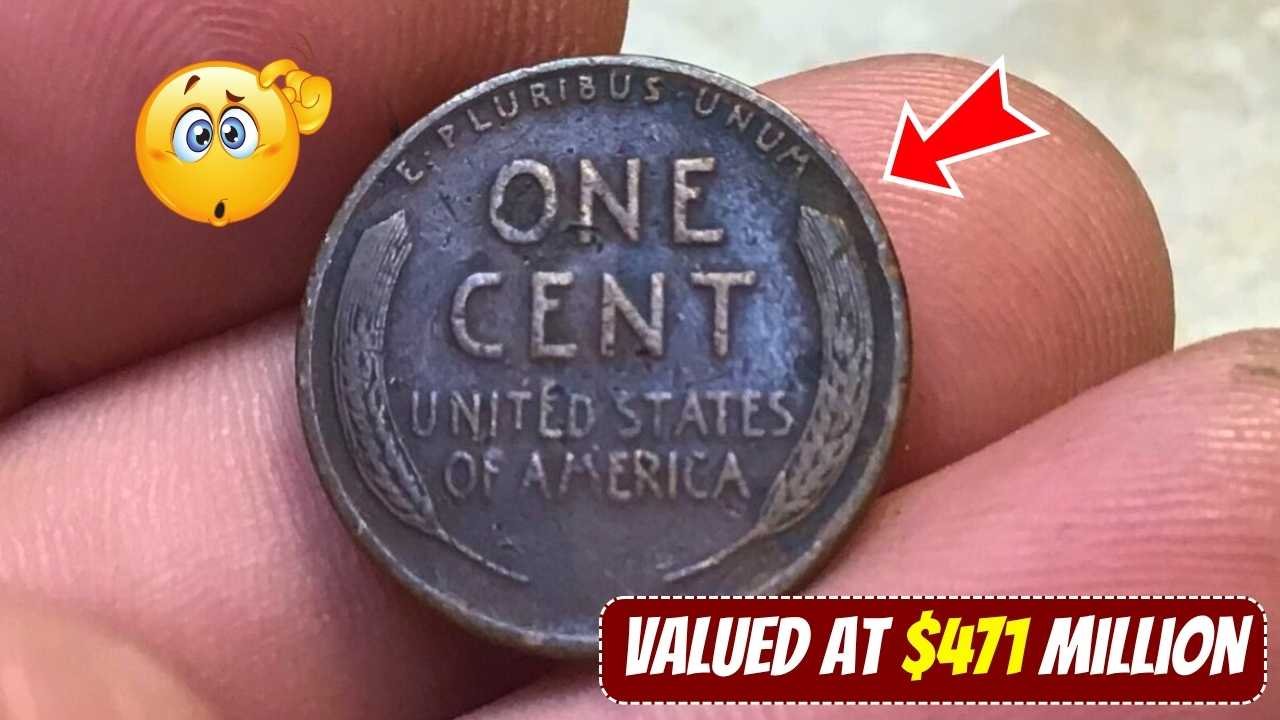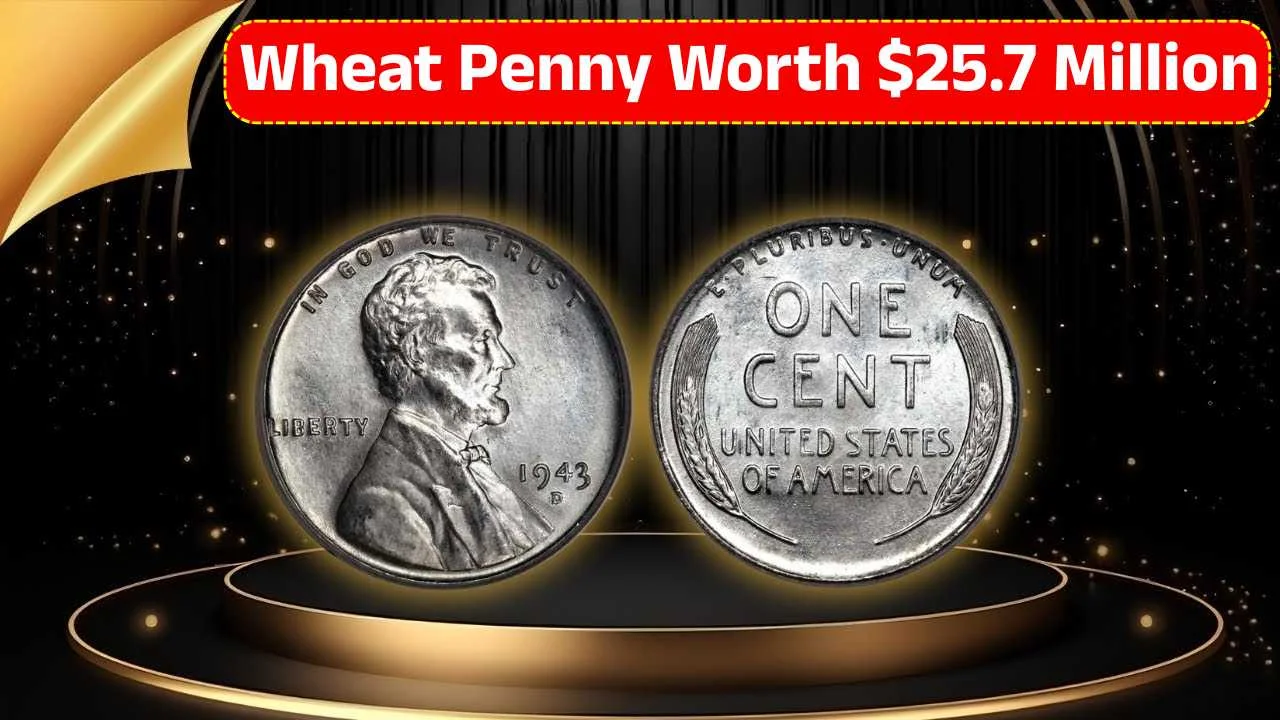The Lincoln Wheat Penny Valued at $278K: In the world of rare coin collecting, certain pennies continue to capture the imagination of collectors and historians alike. Among them, the Lincoln Wheat Penny holds a special place, not just for its historical significance but also for its hidden value. Recently, a particular Lincoln Wheat Penny shocked the numismatic world when it was valued at a jaw-dropping $278,000. This raises the intriguing question: could such a coin still be floating in regular circulation?
A Brief History of the Lincoln Wheat Penny
The Lincoln Wheat Penny, also known as the Lincoln Cent, was first minted in 1909 to commemorate the 100th anniversary of President Abraham Lincoln’s birth. Designed by Victor David Brenner, this penny was the first American coin to feature a real person’s portrait. It stayed in production with its wheat-stalk reverse design until 1958, after which the Lincoln Memorial design took its place.
For nearly half a century, this humble coin represented the backbone of American currency, found in pockets, cash registers, and piggy banks across the nation. But for collectors, not all Lincoln Wheat Pennies are created equal. Some specific versions are incredibly rare and highly sought after, fetching life-changing sums of money at auctions.
What Makes a Lincoln Penny Worth $278K?
The staggering $278,000 valuation isn’t just about the age of the coin. Several key factors can elevate a Lincoln Wheat Penny to that level of worth. The most crucial include minting errors, year of production, mint mark, rarity, and overall condition. The $278K penny in question is believed to be an extremely rare 1943-S Lincoln Wheat Penny that was mistakenly struck in bronze instead of steel.
In 1943, the U.S. Mint used steel-coated zinc to produce pennies due to copper shortages during World War II. However, a few bronze planchets from 1942 somehow made their way into the presses. These bronze 1943 pennies are now some of the rarest coins in U.S. history. Only a handful are known to exist, making them extremely valuable.
How Was the $278K Penny Discovered?
Stories of valuable coins being discovered in ordinary places are not just myths—they actually happen. The $278K Lincoln Wheat Penny was reportedly found in a family’s inherited coin collection. At first glance, it looked like any other old penny, but upon closer inspection by a professional appraiser, it turned out to be a rare 1943-S bronze penny in excellent condition.
The coin was later authenticated and graded by the Professional Coin Grading Service (PCGS), which confirmed its rarity and excellent preservation. At auction, it caught the attention of several high-profile collectors and ultimately sold for $278,000.
Are Rare Lincoln Wheat Pennies Still in Circulation?
Technically, yes. Though most rare Lincoln Wheat Pennies have been identified and removed from everyday use, there’s always a small chance that one could still be sitting in an old change jar or circulating among common coins. With over a billion Lincoln Wheat Pennies minted between 1909 and 1958, many still exist today, and people continue to find hidden treasures among them.
However, the odds of stumbling upon a $278K penny in your daily change are extremely slim. Most of the valuable specimens are either in private collections or have been secured in coin vaults. That said, checking your spare change or old family coin collections might just reward you with a rare find.
How to Identify a Valuable Lincoln Wheat Penny
To the untrained eye, a valuable Lincoln Wheat Penny might look no different from a regular one. But there are some key indicators that collectors use to assess a penny’s value. First, look at the date and mint mark coins from years like 1909-S, 1914-D, 1922-D, and 1943 in bronze are known to be extremely rare. Second, examine the coin for any unusual features, like doubled dates, off-center strikes, or incorrect metals.
If you suspect you’ve found a rare penny, it’s best to get it appraised by a certified coin expert. Reputable services like PCGS or NGC can authenticate the coin and provide a professional grading, which is essential for determining its market value.
Why Coin Collectors Are Obsessed with Lincoln Pennies
Lincoln Wheat Pennies hold a nostalgic charm and historical value that transcends mere metal. They offer a window into America’s past through two world wars, economic depressions, and immense social changes. Collectors are drawn to their symbolism, craftsmanship, and the thrill of discovering something extraordinary in something so ordinary.
The combination of accessibility and the potential for high value makes Lincoln Wheat Pennies a favorite among both novice and experienced numismatists. With prices ranging from a few cents to hundreds of thousands of dollars, these coins represent both a hobby and an investment opportunity.
The Market for Rare Pennies Today
In today’s market, the demand for rare coins remains high, and Lincoln Wheat Pennies continue to be a cornerstone of U.S. coin collecting. Online marketplaces, auction houses, and specialized coin shows see frequent bidding wars over rare and well-preserved specimens.
The recent $278K sale underscores the growing appreciation and monetary value of coins once considered pocket change. Whether it’s due to inflation, nostalgia, or a new generation of collectors, the market for Lincoln Pennies remains vibrant and full of potential.
Final Thoughts
The Lincoln Wheat Penny valued at $278K serves as a powerful reminder that hidden treasures can still be found in the most unexpected places. While the odds are slim, stories like these inspire coin enthusiasts around the world to keep searching. Whether you’re a serious numismatist or someone casually glancing through spare change, the possibility of uncovering a fortune remains very real.
The next time you come across an old penny, don’t overlook it. That one-cent coin might just be worth a fortune.
Disclaimer
This article is intended for informational purposes only. While the values and examples mentioned are based on real-world data and reported auctions, coin prices can vary depending on market conditions, coin grading, and collector demand. Before buying or selling any rare coin, it’s advised to consult with a certified numismatist or professional appraiser. The author is not responsible for any financial decisions based on this content.

